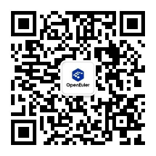Example of Isolation for Hybrid Deployed Services
Environment Preparation
Check whether the kernel supports isolation of hybrid deployed services.
# Check whether isolation of hybrid deployed services is enabled in the /boot/config-<kernel version> system configuration.
# If CONFIG_QOS_SCHED=y, the function is enabled. Example:
cat /boot/config-5.10.0-60.18.0.50.oe2203.x86_64 | grep CONFIG_QOS
CONFIG_QOS_SCHED=y
Install the Docker engine.
$ yum install -y docker-engine
$ docker version
# The following shows the output of docker version.
Client:
Version: 18.09.0
EulerVersion: 18.09.0.300
API version: 1.39
Go version: go1.17.3
Git commit: aa1eee8
Built: Wed Mar 30 05:07:38 2022
OS/Arch: linux/amd64
Experimental: false
Server:
Engine:
Version: 18.09.0
EulerVersion: 18.09.0.300
API version: 1.39 (minimum version 1.12)
Go version: go1.17.3
Git commit: aa1eee8
Built: Tue Mar 22 00:00:00 2022
OS/Arch: linux/amd64
Experimental: false
Hybrid Deployed Services
Online Service ClickHouse
Use the clickhouse-benchmark tool to test the performance and collect statistics on performance metrics such as QPS, P50, P90, and P99. For details, see https://clickhouse.com/docs/en/operations/utilities/clickhouse-benchmark/.
Offline Service Stress
Stress is a CPU-intensive test tool. You can specify the --cpu option to start multiple concurrent CPU-intensive tasks to increase the stress on the system.
Usage Instructions
Start a ClickHouse container (online service).
Access the container and run the clickhouse-benchmark command. Set the number of concurrent queries to 10, the number of queries to 10000, and time limit to 30.
Start a Stress container (offline service) at the same time and concurrently execute 10 CPU-intensive tasks to increase the stress on the environment.
After the clickhouse-benchmark command is executed, a performance test report is generated.
The test_demo.sh script for the isolation test for hybrid deployed services is as follows:
#!/bin/bash
with_offline=${1:-no_offline}
enable_isolation=${2:-no_isolation}
stress_num=${3:-10}
concurrency=10
timeout=30
output=/tmp/result.json
online_container=
offline_container=
exec_sql="echo \"SELECT * FROM system.numbers LIMIT 10000000 OFFSET 10000000\" | clickhouse-benchmark -i 10000 -c $concurrency -t $timeout"
function prepare()
{
echo "Launch clickhouse container."
online_container=$(docker run -itd \
-v /tmp:/tmp:rw \
--ulimit nofile=262144:262144 \
-p 34424:34424 \
yandex/clickhouse-server)
sleep 3
echo "Clickhouse container lauched."
}
function clickhouse()
{
echo "Start clickhouse benchmark test."
docker exec $online_container bash -c "$exec_sql --json $output"
echo "Clickhouse benchmark test done."
}
function stress()
{
echo "Launch stress container."
offline_container=$(docker run -itd joedval/stress --cpu $stress_num)
echo "Stress container launched."
if [ $enable_isolation == "enable_isolation" ]; then
echo "Set stress container qos level to -1."
echo -1 > /sys/fs/cgroup/cpu/docker/$offline_container/cpu.qos_level
fi
}
function benchmark()
{
if [ $with_offline == "with_offline" ]; then
stress
sleep 3
fi
clickhouse
echo "Remove test containers."
docker rm -f $online_container
docker rm -f $offline_container
echo "Finish benchmark test for clickhouse(online) and stress(offline) colocation."
echo "===============================clickhouse benchmark=================================================="
cat $output
echo "===============================clickhouse benchmark=================================================="
}
prepare
benchmark
Test Results
Independently execute the online service ClickHouse.
# no_offline indicates that the offline service Stress is disabled.
# no_isolation indicates that isolation of hybrid deployed services is disabled.
sh test_demo.sh no_offline no_isolation
The baseline QoS data (QPS/P50/P90/P99) of the online service is as follows:
{
"localhost:9000": {
"statistics": {
"QPS": 1.8853412284364512,
......
},
"query_time_percentiles": {
......
"50": 0.484905256,
"60": 0.519641313,
"70": 0.570876148,
"80": 0.632544937,
"90": 0.728295525,
"95": 0.808700418,
"99": 0.873945121,
......
}
}
}
Execute the test_demo.sh script to start the offline service Stress and run the test with the isolation function disabled.
# with_offline indicates that the offline service Stress is enabled.
# no_isolation indicates that isolation of hybrid deployed services is disabled.
sh test_demo.sh with_offline no_isolation
When isolation of hybrid deployed services is disabled, the QoS data (QPS/P80/P90/P99) of the ClickHouse service is as follows:
{
"localhost:9000": {
"statistics": {
"QPS": 0.9424028693636205,
......
},
"query_time_percentiles": {
......
"50": 0.840476774,
"60": 1.304607373,
"70": 1.393591017,
"80": 1.41277543,
"90": 1.430316688,
"95": 1.457534764,
"99": 1.555646855,
......
}
}
Execute the test_demo.sh script to start the offline service Stress and run the test with the isolation function enabled.
# with_offline indicates that the offline service Stress is enabled.
# enable_isolation indicates that isolation of hybrid deployed services is enabled.
sh test_demo.sh with_offline enable_isolation
When isolation of hybrid deployed services is enabled, the QoS data (QPS/P80/P90/P99) of the ClickHouse service is as follows:
{
"localhost:9000": {
"statistics": {
"QPS": 1.8825798759270718,
......
},
"query_time_percentiles": {
......
"50": 0.485725185,
"60": 0.512629901,
"70": 0.55656488,
"80": 0.636395956,
"90": 0.734695906,
"95": 0.804118275,
"99": 0.887807409,
......
}
}
}
The following table lists the test results.
| Service Deployment Mode | QPS | P50 | P90 | P99 |
|---|---|---|---|---|
| ClickHouse (baseline) | 1.885 | 0.485 | 0.728 | 0.874 |
| ClickHouse + Stress (isolation disabled) | 0.942 (-50%) | 0.840 (-42%) | 1.430 (-49%) | 1.556 (-44%) |
| ClickHouse + Stress (isolation enabled) | 1.883 (-0.11%) | 0.486 (-0.21%) | 0.735 (-0.96%) | 0.888 (-1.58%) |
When isolation of hybrid deployed services is disabled, the QPS of ClickHouse decreases from approximately 1.9 to 0.9, the service response delay (P90) increases from approximately 0.7s to 1.4s, and the QoS decreases by about 50%. When isolation of hybrid deployed services is enabled, the QPS and response delay (P50/P90/P99) of ClickHouse decrease by less than 2% compared with the baseline, and the QoS remains unchanged.










